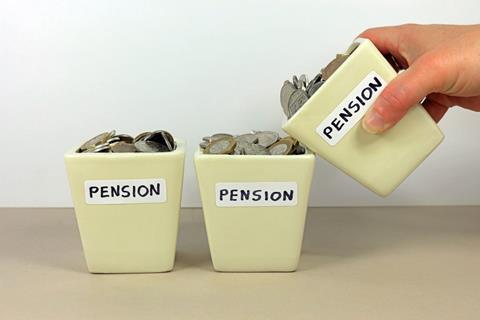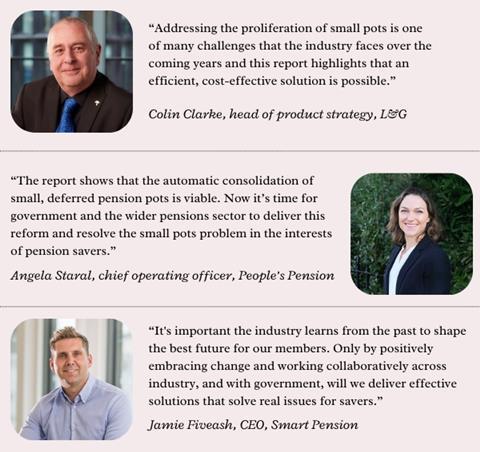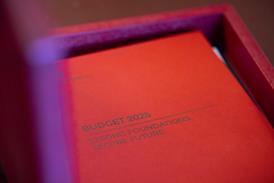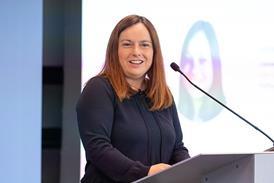A consolidation system for small pension pots should use existing infrastructure and be industry-led wherever possible, according to a new report.
The ‘Small pots digital systems Feasibility Review’, co-authored by Kim Gubler of KGC Associates and Lumera’s Maurice Titley, sets out a proposed model for the consolidation of deferred auto-enrolment pension pots of less than £1,000.
The Pension Schemes Bill, currently being reviewed by a parliamentary committee, contains primary legislation setting out the broad scope of reducing the number of small, deferred pots.

The report’s authors explored the practicalities of building a central system to facilitate consolidation, but found no appetite in the industry for the work and expenditure that would be needed.
Instead, the report recommended a “federated” approach – essentially using existing technologies to facilitate consolidation, overseen by a legislative framework and industry-approved standards.
The industry consensus behind dashboards, as well as the successful development of data standards and a central digital system, were cited often by the Feasibility Review as examples to follow.
Gubler and Titley wrote: “We concluded it is not necessary to create any significant new central infrastructure beyond that required to support governance and regulation.
“This design allows pension schemes and approved consolidators to interact directly or through service providers using agreed data and message standards. It supports scalability and can be delivered more efficiently than a central system.”
Using existing technologies and frameworks
This model would use existing messaging frameworks, similar to those used by banks and other financial institutions. It would also use an industry-led approach similar to the one that has supported the creation of the pensions dashboards system.
“This avoids single points of failure and provides each scheme and consolidator with operational autonomy, provided consistent standards are followed,” the report stated, meaning it would essentially create a data platform without creating anything from scratch.
However, the model suggested by the report would still have ongoing costs of around £2m-£3m a year across the approved consolidators. Those schemes not approved as consolidators could see costs of £5m-£10m, the report forecast.
The government wants a small pots consolidation service to be in place by 2030, with several defined contribution ‘megafunds’ expected to have reached the required £25bn threshold by this time.
Gubler and Titley explained that a second stage of the Feasibility Review, which has not been commissioned yet, would have to explore further issues such as implementation phasing and how to handle any exceptions to consolidation.
Practical solution to small pots ‘within reach’

Zoe Alexander, executive director of policy and advocacy at Pensions UK, said: “This review shows that a practical solution to combine millions of small pension pots is within reach – one that delivers value for members, enables schemes to operate effectively, and ensures policy objectives are met.
“By working together, government, regulators, and industry can deliver consolidation in a way that is efficient, fair, and beneficial for millions of savers.”
“Alongside progress on dashboards, tackling small pots is a crucial step to help millions of people stay connected to their savings and improve their retirement security.”
Torsten Bell, pensions minister
Torsten Bell, the pensions minister, said: “With more small pots than pensioners in the UK, too many people are losing track of their hard-earned savings. This is bad for pension savers and bad for the pensions system.
“I welcome this report, which underlines our commitment to working with industry to fix that. Alongside progress on dashboards, tackling small pots is a crucial step to help millions of people stay connected to their savings and improve their retirement security.”























